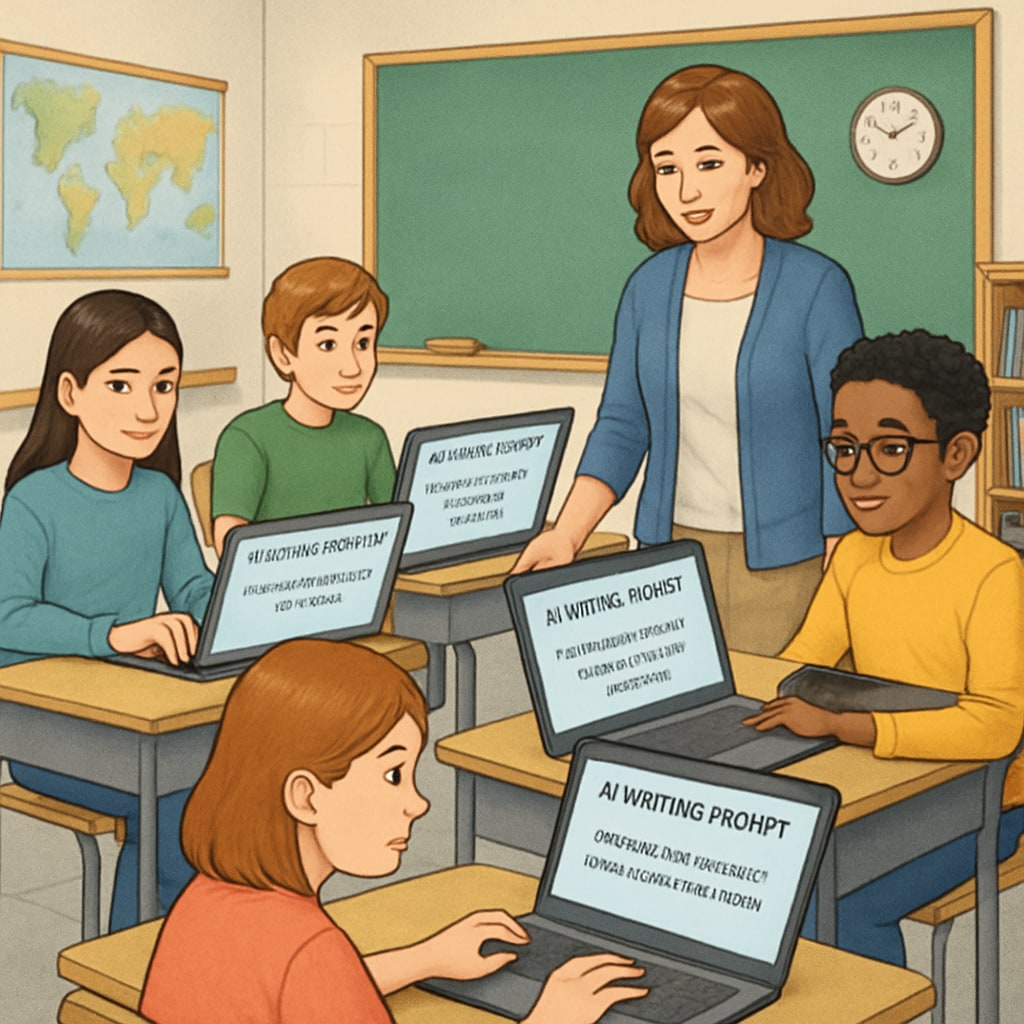As technology advances, integrating innovative tools into education has become essential. Among these, AI writing prompts, media literacy, and educational resources are emerging as transformative solutions for high school classrooms. These tools empower educators to enhance students’ critical thinking, storytelling, and analytical skills through engaging methods. This article explores five innovative strategies to use AI tools in fostering media literacy among 9–12 grade students, making learning more interactive and impactful.
1. Using AI to Analyze Visual Narratives
Understanding visual storytelling is a vital part of modern media literacy education. AI tools like visual recognition software can help students deconstruct the elements of a film or media piece, such as camera angles, color schemes, and composition. For example, students can use AI platforms to analyze scenes from classic films, identifying how directors use visual techniques to convey emotions or themes.
- Encourage students to upload selected movie clips into AI tools for scene analysis.
- Discuss how visual elements influence storytelling and audience perception.
- Incorporate group discussions to compare AI-generated insights with students’ interpretations.

2. Enhancing Writing Skills Through AI-Powered Prompts
AI-powered writing prompts are excellent resources for sparking creativity and guiding structured thought processes. These tools can provide tailored exercises that encourage students to engage deeply with media topics. For example, an AI prompt might ask, “Describe how media bias affects public opinion using examples from recent news stories.” This encourages critical thinking and helps students articulate complex ideas clearly.
- Use AI to generate prompts that align with current curriculum topics.
- Provide feedback on student responses using AI writing assistants.
- Encourage peer review sessions to refine critical analysis skills.

3. Developing Ethical Awareness with AI Media Insights
Media literacy is not just about analyzing content; it’s also about understanding its ethical implications. AI tools can help students explore issues like media bias, misinformation, and digital ethics. For instance, educators can use AI platforms to simulate scenarios where students must identify credible sources or debunk fake news.
By engaging with such exercises, students develop a deeper understanding of how media shapes societal narratives and learn to approach information critically. This is especially relevant in today’s digital age, where misinformation spreads rapidly.
4. Promoting Collaboration Through AI-Driven Storytelling
Storytelling is a powerful way to foster creativity and teamwork. AI tools can facilitate collaborative projects where students create their own short films or multimedia presentations. For example, students can use AI to generate story outlines, develop scripts, or design visuals for their projects.
- Assign group projects where students use AI to co-create storyboards.
- Incorporate AI tools for editing and refining multimedia content.
- Host a “film festival” to showcase student projects and discuss their creative processes.
Such activities not only enhance media literacy but also build essential soft skills like communication, teamwork, and project management.
5. Leveraging Free Resources for Classroom Innovation
One of the most significant advantages of AI tools is their accessibility. Many platforms offer free resources tailored to educators, making it easier to integrate technology into the classroom without budget constraints. For instance, free AI writing prompt packages provide structured exercises that help students explore complex media topics while improving their writing skills.
Additionally, open-source AI tools can be used to customize lessons. These resources allow educators to adapt content to the specific needs of their students, ensuring a more personalized and engaging learning experience.
By leveraging these tools, teachers can create a dynamic classroom environment that encourages curiosity and lifelong learning.
Conclusion: Integrating AI tools into media literacy education offers a wealth of opportunities for both students and educators. From analyzing visual narratives to enhancing writing skills, these technologies provide innovative ways to engage with complex topics. By adopting strategies like AI writing prompts and collaborative storytelling, educators can inspire students to think critically, express creatively, and navigate the digital world ethically.
Readability guidance: This article uses short paragraphs and concise sentences to maintain clarity. Key points are summarized through lists, and transitions like “for example” and “in addition” are used to enhance flow. The passive voice is minimized, and active voice is consistently prioritized.


